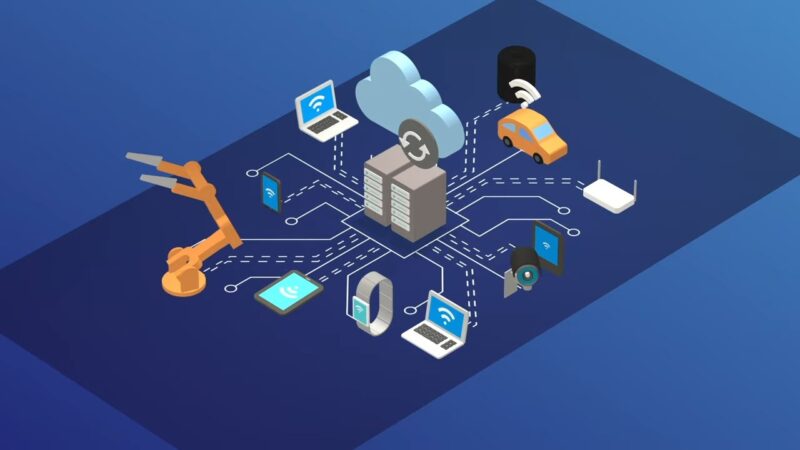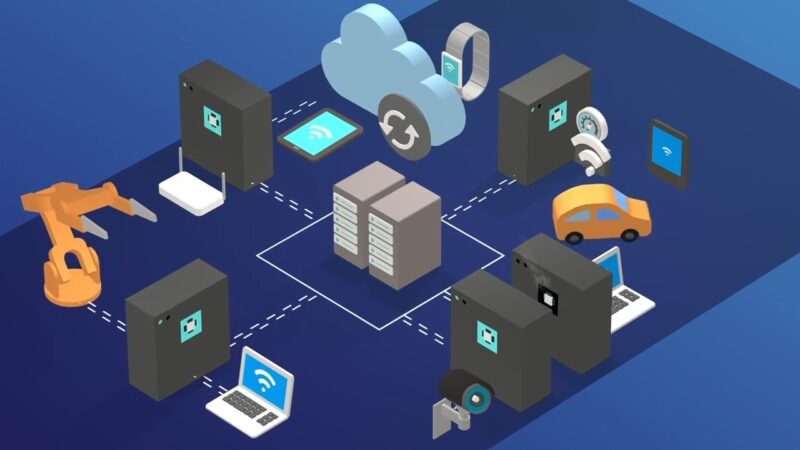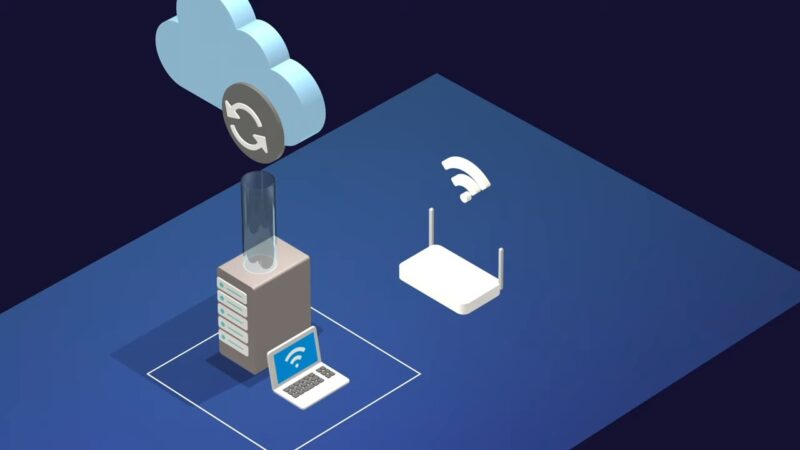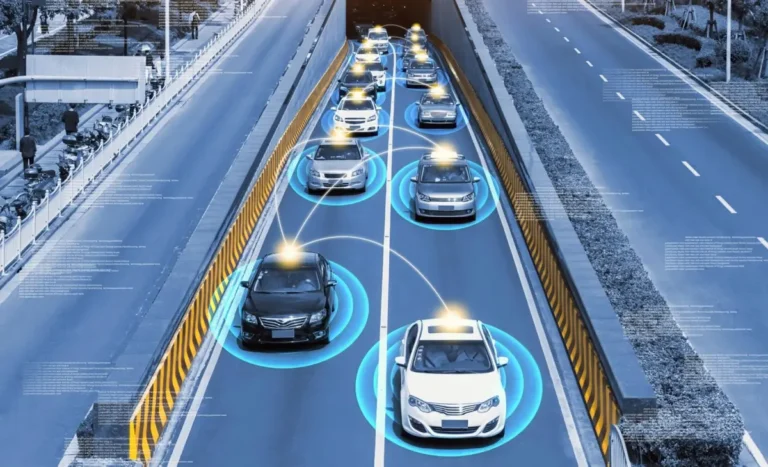When I first delved into the world of edge computing, I was amazed by its potential to revolutionize our digital experiences. Imagine a world where your devices respond almost instantly, where there’s no frustrating lag or buffering.
That’s the promise of edge computing. At its core, it is all about bringing computation and data storage closer to where the data originates, typically at the “edge” of the network. This proximity is crucial in addressing one of the most persistent issues in computing: latency.
Fun Fact: The origins of edge computing can be traced back to content-distributed networks from the late 1990s, which aimed to serve web and video content from servers located near users.
Latency and its Impact

Latency, in the realm of computing, refers to the delay between a user’s action and the system’s response. Think of it as the time it takes for your online game to react to your moves or for a webpage to load after you click on a link. Several factors contribute to latency, including:
- Data transmission distances
- Processing delays
- Physical infrastructure of the network
For us, the end users, latency can manifest in various ways.
Pro Tip: The world’s data is expected to grow 61 percent to 175 zettabytes by 2025. With such a massive influx of data, addressing latency becomes even more critical.
Edge Computing
So, what exactly is it? It’s a distributed computing paradigm designed to bring computation and data storage closer to data sources, like our personal devices.
This proximity is expected to enhance response times and conserve bandwidth. Unlike traditional cloud computing, which relies on centralized data centers, edge computing leverages edge nodes or devices situated nearer to users.
Fun Fact: Sometimes used interchangeably with fog computing. However, in larger deployments like Smart Cities, fog computing can act as a distinct layer between the Edge and the Cloud.
Reducing Latency

The beauty lies in its ability to minimize data travel distance. By positioning edge nodes closer to users, data doesn’t have to traverse long distances to centralized servers.
This proximity significantly reduces transmission delays. By offloading computation tasks from central servers to edge nodes, processing can occur locally. This local data processing means that decisions based on the data can be made in real time, leading to instantaneous responses.
Pro Tip: Edge nodes used for game streaming are known as “gamelets.” These are typically just one or two hops away from the client, ensuring minimal latency for a seamless gaming experience.
Edge Computing Uses
Video Surveillance
With the proliferation of surveillance cameras in various domains, transmitting all the data to centralized servers can be both costly and slow. Edge computing can play a pivotal role here.
Smart cameras equipped with edge nodes can perform initial analytics, such as recognizing entities of interest. Only the relevant footage is then sent to a local edge for deeper analysis.
For instance, in the event of a major fire, cameras close to the scene can differentiate between burning objects and humans. Upon recognizing a human, the video is transmitted to the local edge, ensuring minimal latency and prompt action.
Smart Cities
Managing cities has become increasingly complex due to rising operational costs, inefficiencies, and growing citizen expectations. Technologies like IoT and edge computing are making smart city solutions more viable. Embedding IoT devices into city infrastructure provides insights into asset behavior.
It ensures real-time decisions without transmitting vast amounts of sensor data. This is crucial for mission-critical solutions such as traffic management, flood monitoring, and security.
Connected Cars

Modern vehicles are equipped with numerous sensors that gather data, including user behavior. Initial data analysis can be executed within the vehicle itself.
Relevant information is then sent to a base station, which further transmits the data to the appropriate endpoint, be it a content delivery network or a manufacturer’s data center.
Manufacturing
In manufacturing, rapid response to processes is vital to reduce defects and boost efficiency. Analytic algorithms monitor equipment performance and adjust operating parameters to enhance efficiency.
They also predict potential failures, allowing for timely maintenance. For instance, consider a factory with over 3,000 pieces of equipment.
An unplanned outage during a production run can cost up to $250,000 per hour. Edge computing can help in monitoring and predicting such outages, ensuring smooth operations.
Fun Fact: The term “Smart City” was coined in the early 2010s. It refers to a city that uses digital technology to enhance performance and well-being, reduce costs and resource consumption, and engage more effectively with its citizens.
Digital and Physical Architecture

Edge computing comprises three primary nodes:
Device Edge
These are the actual devices running on-site, such as cameras, sensors, and other physical devices that gather data or interact with edge data. Some devices simply collect or transmit data, while others have processing capabilities for additional tasks.
Local Edge
These systems run on-site or at the network’s edge. They can be divided into two sublayers:
- Application Layer: Hosts applications that are too large for the device edge. Examples include complex video analytics and IoT processing.
- Network Layer: This is mostly virtualized or containerized, comprising routers, switches, and other network components essential for the local edge.
Cloud
This layer can be on-premise or in the public cloud. It serves as the source for workloads that handle processing not feasible at other edge nodes. It also includes management layers, ensuring seamless orchestration of tasks across the architecture.
Pro Tip: The combination of 5G and edge computing is set to revolutionize industries, especially those relying on real-time data processing, such as autonomous vehicles and telemedicine.
FAQ
What’s the relationship between 5G and edge computing?
While it can function on networks other than 5G, such as 4G LTE, the true potential of 5G is unleashed when combined with an edge computing infrastructure. 5G reduces network latency between the endpoint and the mobile tower, but edge computing addresses the latency caused by the distance to a data center.
How does edge computing actually work?
At its core, it brings computation and data storage closer to the devices where data is being gathered, rather than relying on a distant central location. Devices connect to a nearby module for more responsive processing. This can range from IoT sensors to security cameras or even internet-connected appliances.
Are there any security concerns with edge computing?
Yes, especially when data at the edge is being handled by various devices that might not be as secure as centralized systems. As the number of IoT devices grows, it’s crucial to understand potential security issues, including encrypting data, employing access-control methods, and possibly using VPN tunneling.
How does edge computing benefit businesses?
It can offer cost savings, especially for companies that found bandwidth costs in cloud-based applications to be higher than expected. Moreover, the ability to process and store data faster enables more efficient real-time applications, which can be critical for many businesses.
Conclusion
The world of edge computing is fascinating, isn’t it? By bringing computation closer to the data source, we’re not only enhancing user experiences but also paving the way for innovations that were once deemed impossible.
The importance of low-latency experiences cannot be stressed enough, especially in our fast-paced digital age. So, if you’re looking to improve application performance or simply curious about the latest in tech, edge computing is definitely a topic worth exploring further.








